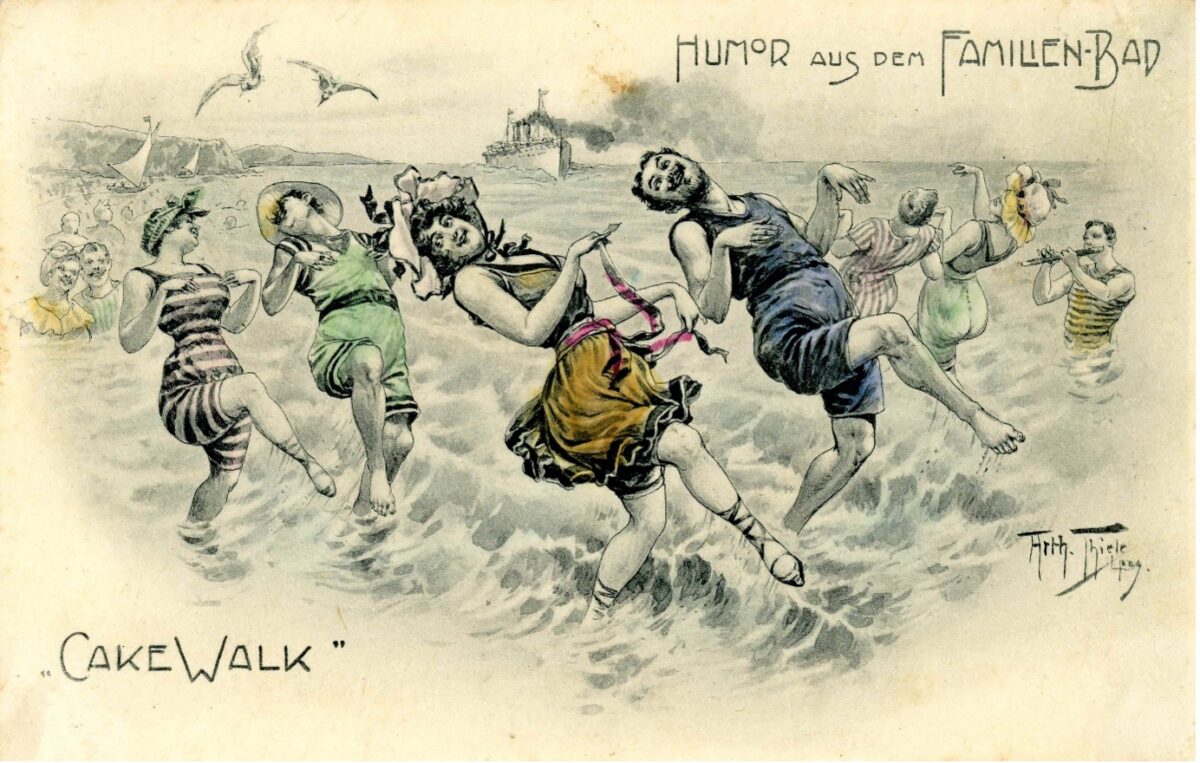Eve Rosenhaft discusses emerging research on performances staged by Romani visitors to Britain at the turn of the 20th Century
“…sang English songs and danced the cakewalk…” This verbal snapshot of Romani girls and boys dancing the cakewalk on the pier gave us a startling insight into the experience of the travellers. At the same time it opened up a whole new line of inquiry into aspects of their journey and even into wider questions of Romani musical performance around the turn of the century. The cakewalk doesn’t figure in any account of European Romani performances that we have seen. Where, we wondered, did they learn it, and how unusual was its appearance in the Hamburg docks?
Like so many modern popular dances, the cakewalk originated with African Americans. It began as a social dance that involved exaggerated high-stepping, often danced by men and women in evening clothes, probably devised by enslaved Black people to parody the behaviour of the white planters. By the 20th century it was also a model for elaborate individual performances on the dance floor and in the context of show-dances. Around the turn of the century, the cakewalk became popular all over the world, entering the repertoire of dance bands and cabaret combos and even featuring in the classical compositions of Claude Debussy As Astrid Kusser explains in her book Körper im Schieflage (2013), the cakewalk had arrived in Germany by the time our Romani migrants left for Britain, featuring regularly as a social dance in urban dance halls from 1905.
How did the cakewalk enter the repertoire of Romani Germans?
Romani musicians who played for non-Romani audiences always depended for their livelihoods on knowing what their audiences wanted, and this meant picking up on the latest trends in popular music, learning new tunes by ear and playing them back – though often in a characteristic style that added a touch of the exotic to the performance. A rare first-hand account of Romani musicians in Germany from the early 1900s confirms that even when travelling in the countryside and playing in wayside inns, ‘[t]hey play by ear and by heart whatever they think will best please their audience … low music-hall crazes [and] Gassenhauer [popular songs]’ (Bernard Gilliat-Smith, ‘The Gypsies of the Rhine Provinz in 1902-03’, Journal of the Gypsy Lore Society NS 1 (1907-08): 125-44: 129).
Another dimension of their story that is beginning to emerge is the evidence that, once in Britain, they worked together with English and Scottish promoters who organised venues, advertised their performances and shared the takings. We want to know more about those promoters, some of whom seem to have specialised in sponsoring Romani groups. At this stage we can hypothesise that they would have advised the performers on what songs and dances would sell, and also that through them the Romani visitors might have had the opportunity to share the stage with and learn from non-Romani musicians and dancers.
Wherever and however it originated, the Romani cakewalk is an object lesson in the adaptability, enterprise and essential modernity of European Roma.
